Effective marketing is vital for growing your business.
But there are various problems marketing teams face that make success difficult. Ranging from a lack of solid strategy to reduced budgets.
We’re about to unpack seven common marketing problems—and provide solutions to empower strategic decision-making.
1. Lack of Strategy
Teams without a solid marketing strategy risk wasting resources, misaligning campaigns, and missing business goals. And they’ll likely struggle in a sea of competition.
Some teams may launch a series of uncoordinated marketing tactics to figure out what works in their industry.
One week, they might run a few ads. The next, they might publish several SEO posts. And later dabble in influencer marketing.
This guesswork approach isn’t likely to be effective. Especially when you consider that savvy competitors are likely keeping track of trends and evolving tactics to adjust as needed.
How to Solve This Problem
Develop a big-picture vision of how you’ll position your product or service, engage your audience, and grow revenue. To set the stage for selecting and coordinating relevant marketing tactics that are aligned with your overarching targets.
Craft a clear marketing strategy following these seven steps:
1. Set Quantifiable Goals
Define specific, measurable, actionable, relevant, and time-bound (SMART) marketing goals that contribute to the broader company goals. To make sure you’re staying focused on what matters.
Here’s an example of what a clear goal looks like: “Achieve a 20% increase in website visitors over the next three months.”
2. Research Your Market and Target Audience
Gather comprehensive, up-to-**** data about your ideal customers and your competitors. So you can tailor your marketing accordingly.
With Semrush’s Market Explorer, you can do in-depth research on your market and audience.
Navigate to the tool and click “Analyze Category,” select your target location and business category, then hit the “Research a market” button.

The main dashboard that appears lets you explore various data points like:
- Market Domains: The number of domains you’re competing against in your chosen market
- Market Consolidation: How evenly divided the market is among current players
- Market Traffic: The total traffic of all domains in your market over a given period
- Market Size: The total amount of demand from people in your target market
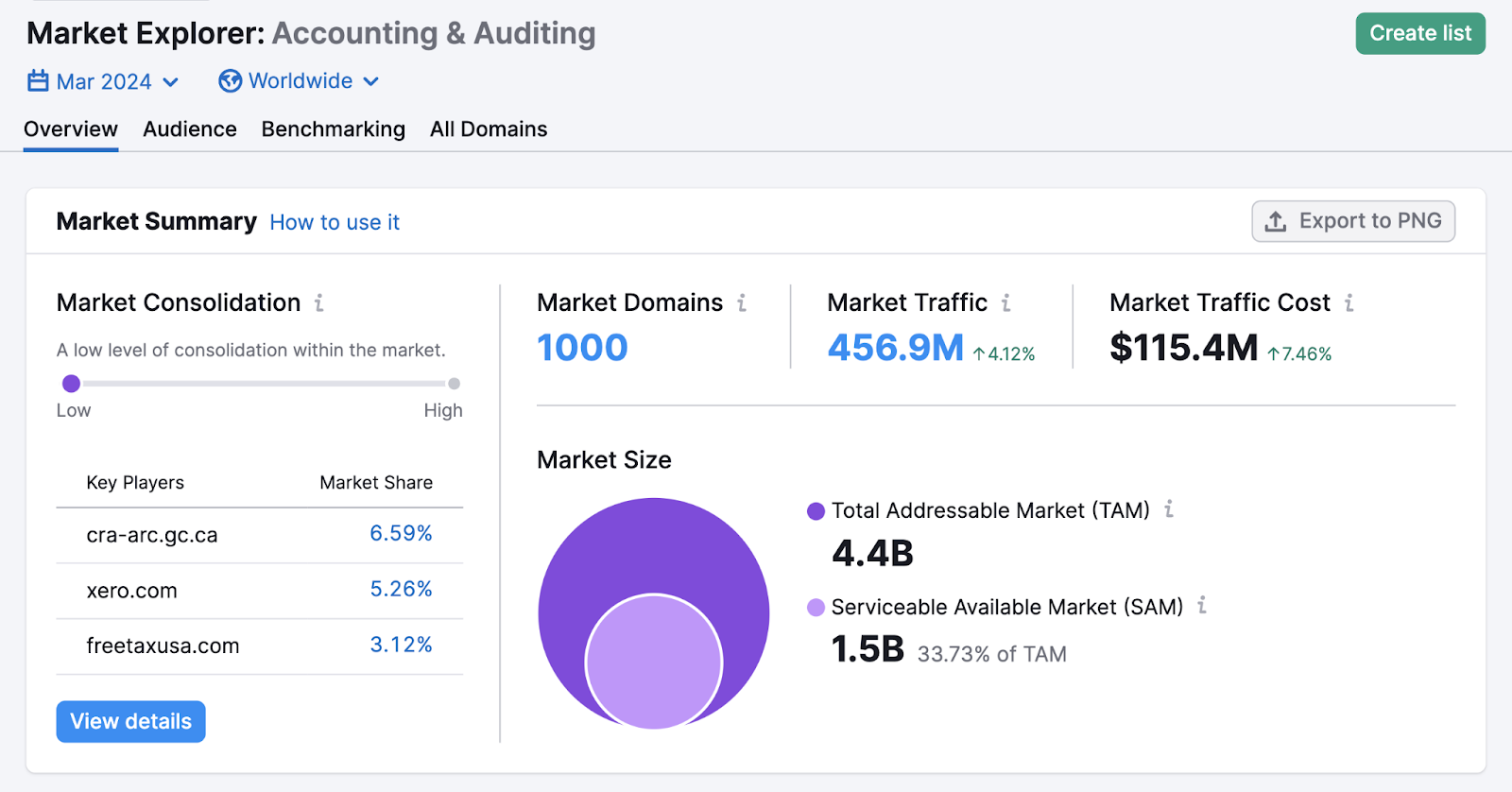
Scroll down to find market share data for different countries.

You’ll also see details on the main market players under the “All Domains” tab.
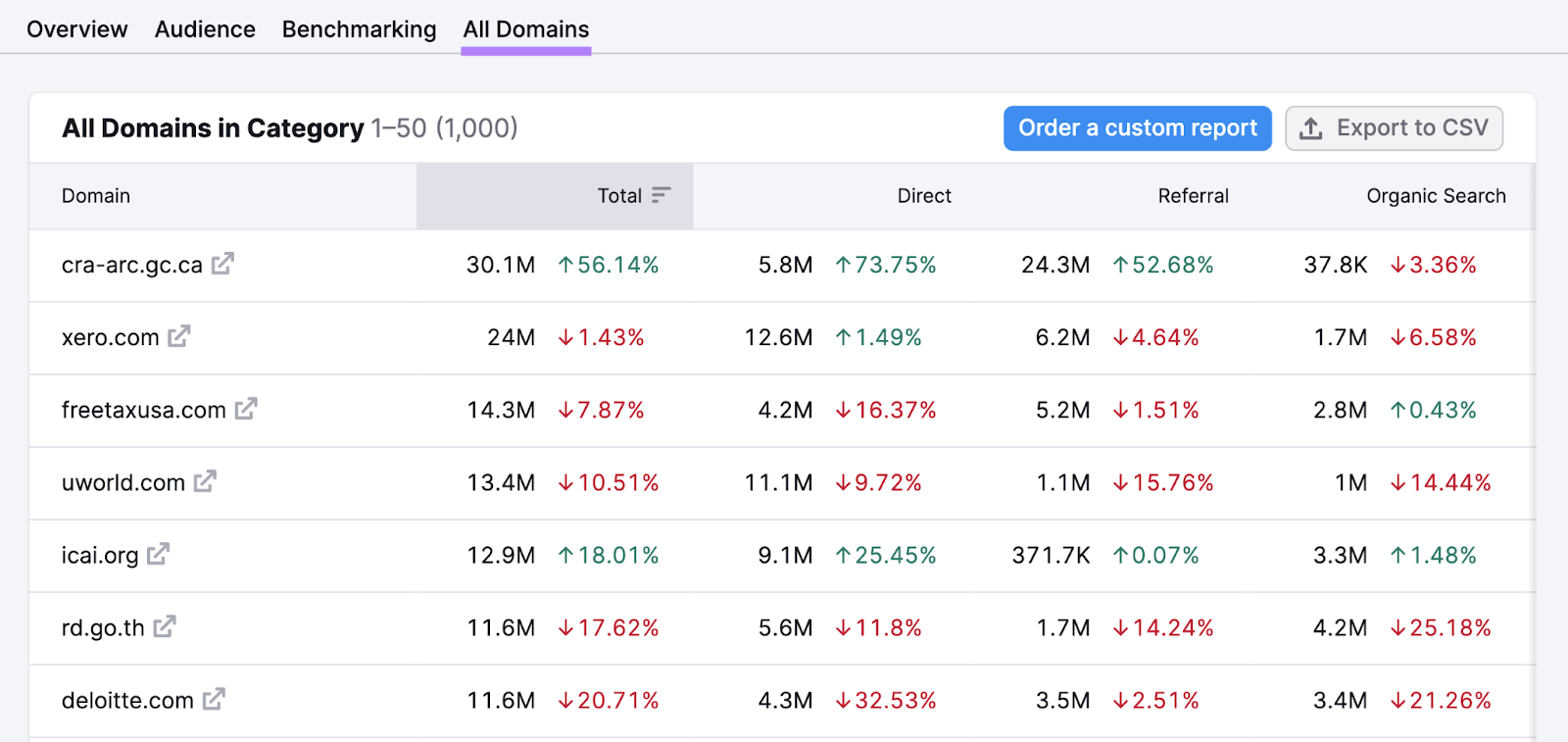
Use the information from Market Explorer to figure out who your key competitors are and how they’re performing.
And be sure to visit the “Audience” tab to learn as much as you can about your target audience’s demographic, socioeconomic, and behavioral data.
When you’re ready to look into specific competitors, use Domain Overview.
To start, enter a competitor’s domain and click “Search.”

The main “Overview” dashboard will display data like your competitor’s total backlinks (links from other sites that point to their site), organic (unpaid) search traffic estimates, and more.
To analyze your site’s search traffic against your competitors, select the “Compare domains” tab. And add your domain as well as some additional competitors.
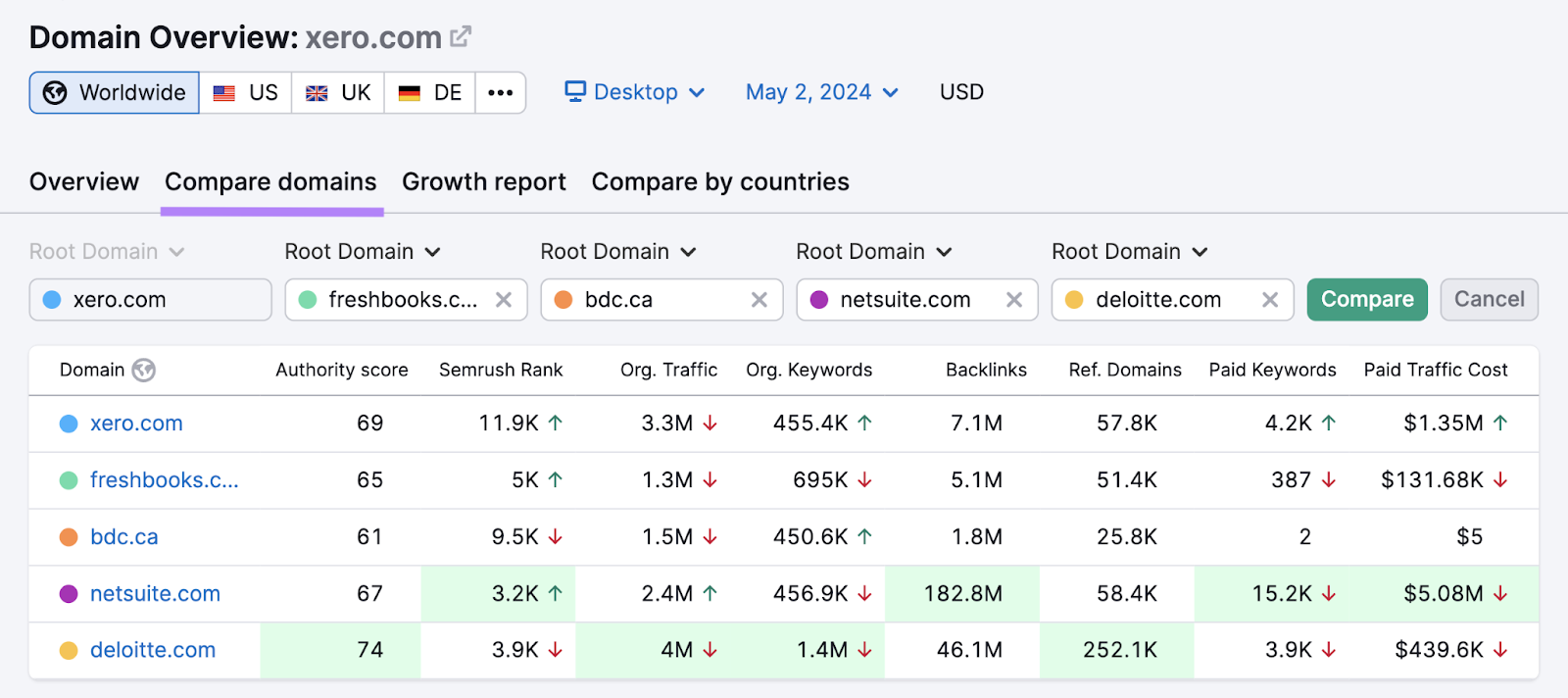
Make note of what you learn about both your audience and your competitors.
For example, if most market players are attracting a lot of prospects through organic traffic, it might be worth investing in your own search engine optimization (SEO) efforts.
3. Determine Your Strategic Direction
Based on your research, think about what gives you an advantage over the competition. And how you can use that to grow revenue and acquire market share.
Say you’re a small beauty company competing against massive brands.
You might want to highlight your environmentally friendly packaging and unique colors as part of your strategy. So you can distinguish yourself in your market.
4. Develop Brand Messaging
Next, define your core values, tone of voice, and cross-channel brand guidelines to inform your marketing communications.
Brand guidelines should also highlight your business’s value proposition—which details how your offering benefits target customers.
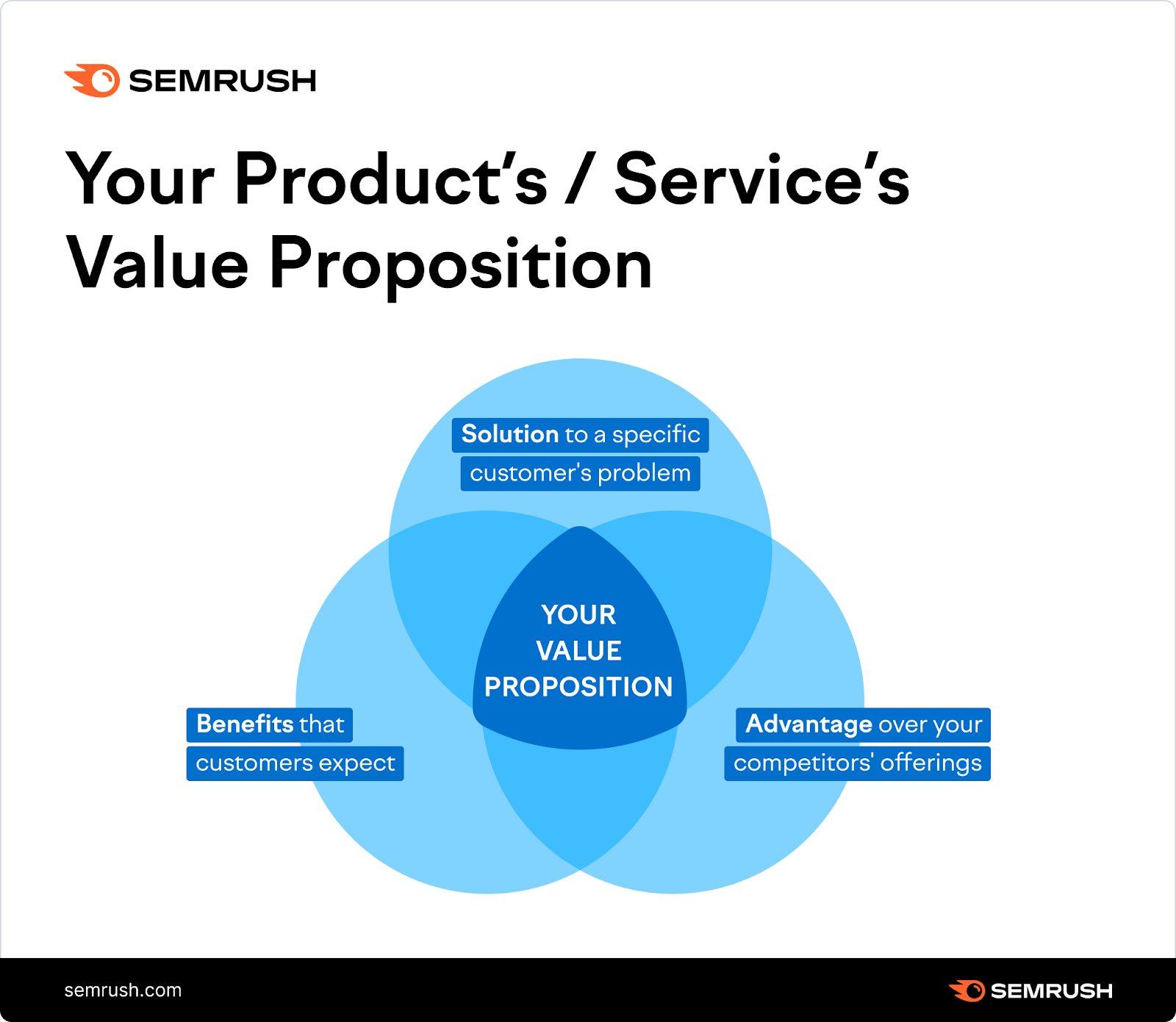
5. Pick Marketing Tactics and Channels
The next step is to choose which channels and tactics to use. And you should focus on ones that resonate with your audience.
Say your target customers primarily use YouTube to research topics relevant to your product or service (which you determined when using Market Explorer). If so, consider investing in video SEO.
6. Define Your Budget and Plan Your Timeline
You should now set a budget to support your marketing strategy. Enabling you to get the experts, tools, and resources needed to execute your plans.
Get the most value out of your budget by focusing on the high-priority channels and tactics you identified in the last step.
And then plan a clear execution timeline. So you can track goals, hold teams accountable, and have a transparent view of your progress.
Use tools like Semrush’s AI Marketing Strategy to execute your marketing plan smoothly.
The app will recommend tactics aligned with your business goals. And it lets you create content and graphics to build a library of reusable assets.
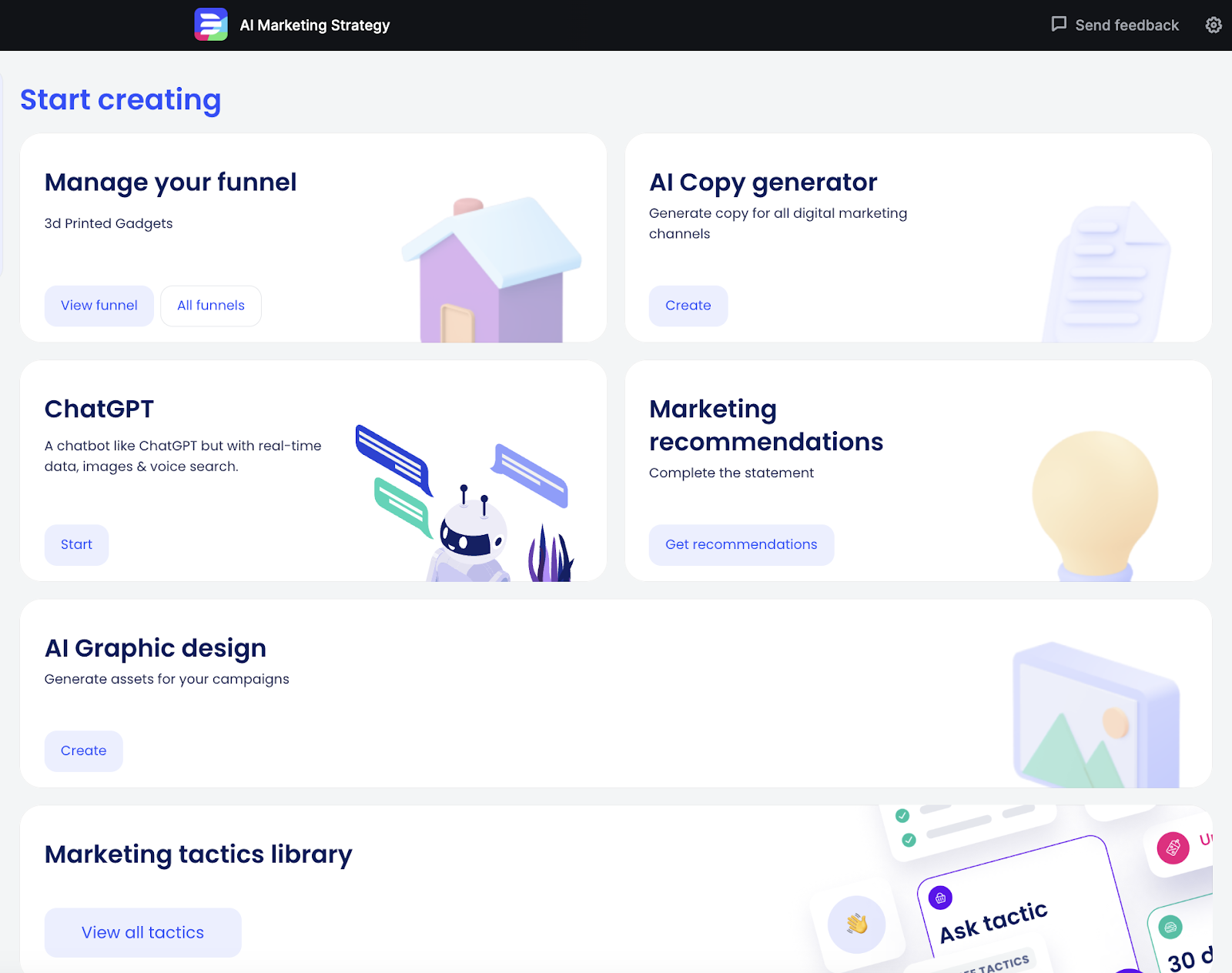
Further reading: How to Create a Marketing Budget in 9 Steps (+ Free Template)
7. Document and Analyze Progress
Monitor performance to see what’s working and what’s not. So you can make needed adjustments.
Consider looking into traffic, conversions, keyword rankings, and other marketing data points relevant to your goals. And use tools that fit your choice of channels and tactics.
For example, Google Analytics 4 (GA4) is the go-to platform for monitoring website traffic from search, social, and other sources. You can also set up GA4 to track conversions (called “key events” in the tool) like product sign-ups or ebook downloads.
And Semrush’s Position Tracking is a useful tool to analyze your website’s rankings for target keywords.
2. Marketing and Sales Misalignment
When there are disagreements about priorities and no regular meetings between sales and marketing, it’s difficult to make progress toward business goals.
This is because a disjointed approach can lead to duplicate efforts or pushing inconsistent messaging. And damage team morale in a way that leads to poor performance.
A Gartner survey reveals that separate sales and marketing funnels, budget disputes, and poor feedback loops are common reasons for misalignment.
How to Solve This Problem
Here are a few ideas to help you bridge the gap between marketing and sales:
- Communicate regularly: Schedule frequent team meetings to go over objectives and tactics. Marketers should ask sales what they need and vice versa. And both groups can act on the feedback they provide to each other.
- Set goals together: Both teams should work toward a common goal and decide what’s needed to get there. That approach likely led to how Slack determined which fields to include on its gated content forms:

- Align messaging: When marketers update messaging, they should update pitch decks, case studies, and other sales enablement content. To avoid misaligned messaging that confuses prospective customers.
- Share data: Using a customer relationship management (CRM) system that’s accessible to both teams allows everyone to contribute information about prospects and customers that everyone can benefit from
3. Marketing Attribution Challenges
Marketing attribution lets you know which tactics drive conversions for your business. But figuring out marketing attribution is complex.
Why?
Because consumers use multiple devices to engage with brands. And they do so across social media, search engines, and other channels. Which creates multi-channel complexity that many tools aren’t equipped to handle.
For instance, people may learn about a brand while browsing social media on a mobile device, later visit the brand’s website on a tablet at home, and eventually do a Google search to find its product on a desktop computer at work.
Plus, data privacy laws and cookie depreciation further complicate attribution.
There’s also the issue of which attribution model to choose.
Should you go for first-touch attribution and give all the credit to a user’s first touchpoint? Or should you opt for linear attribution to give equal value to each interaction?
How to Solve This Problem
First off, determine which attribution type (there are several) makes the most sense for you. Which will be based on your goals and priority marketing channels.
If you’re focused on driving leads through SEO content, first-touch attribution is likely a good choice. But a last-touch model may be the better option if your goals are centered driving sales with ads.
Then, choose a tool that’s capable of helping you track conversions with your chosen model.
In many cases, Google Analytics is a good option. Because it allows for three different ****** and lets you select an attribution model for your reports.
Just make sure to set up your GA4 account to track custom events that align with your most important conversions. Then, you’ll be able to see information on those events according to the attribution model you selected.
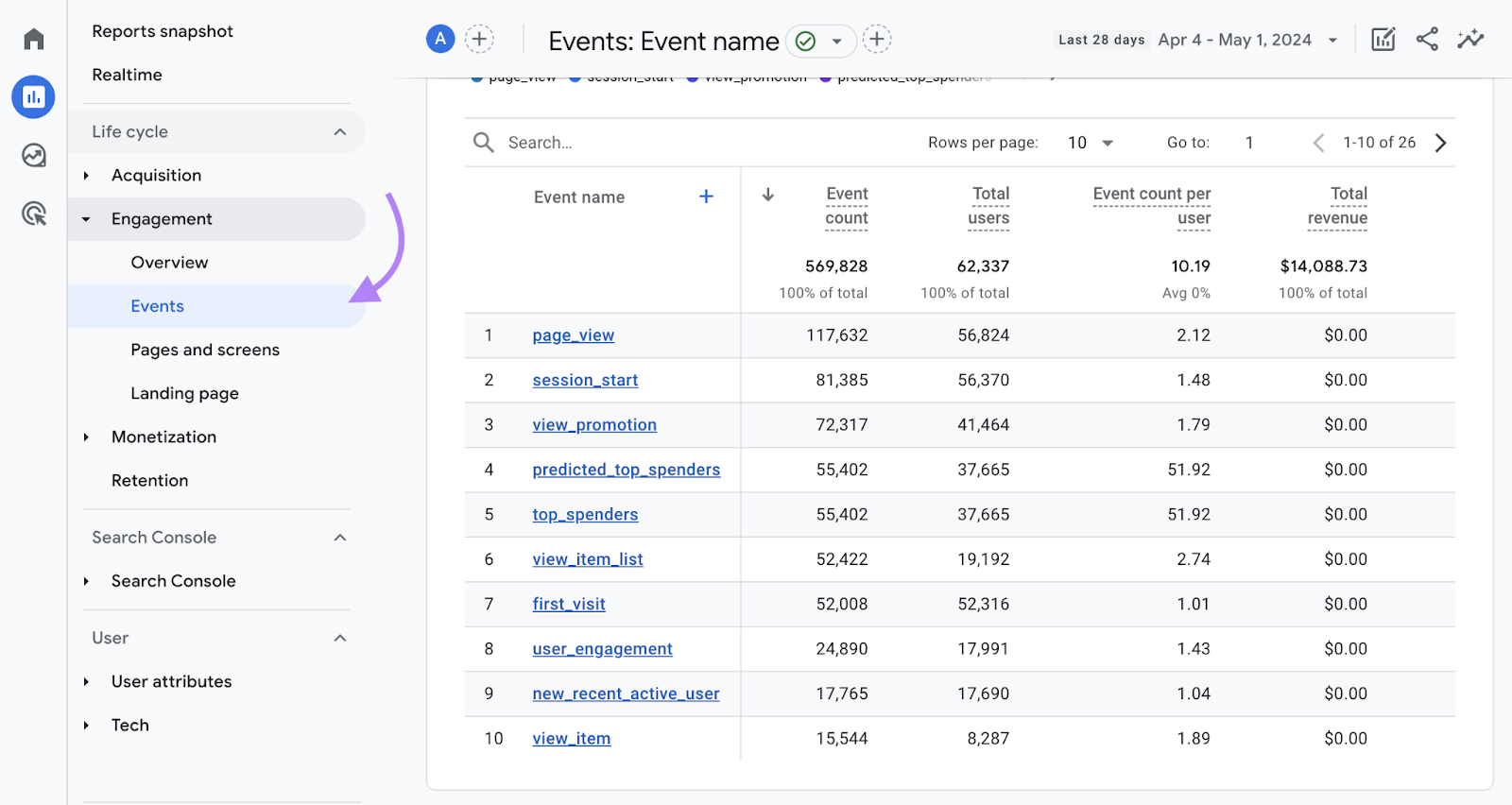
Using UTM codes can also help with tracking attribution. As is using other tools like content reporting software.
4. Leads That Don’t Become Customers
Turning leads into paying customers is another common challenge. In fact, Semrush’s State of Content Marketing 2023 report shows 45% of content marketers cite generating quality leads as a top challenge.
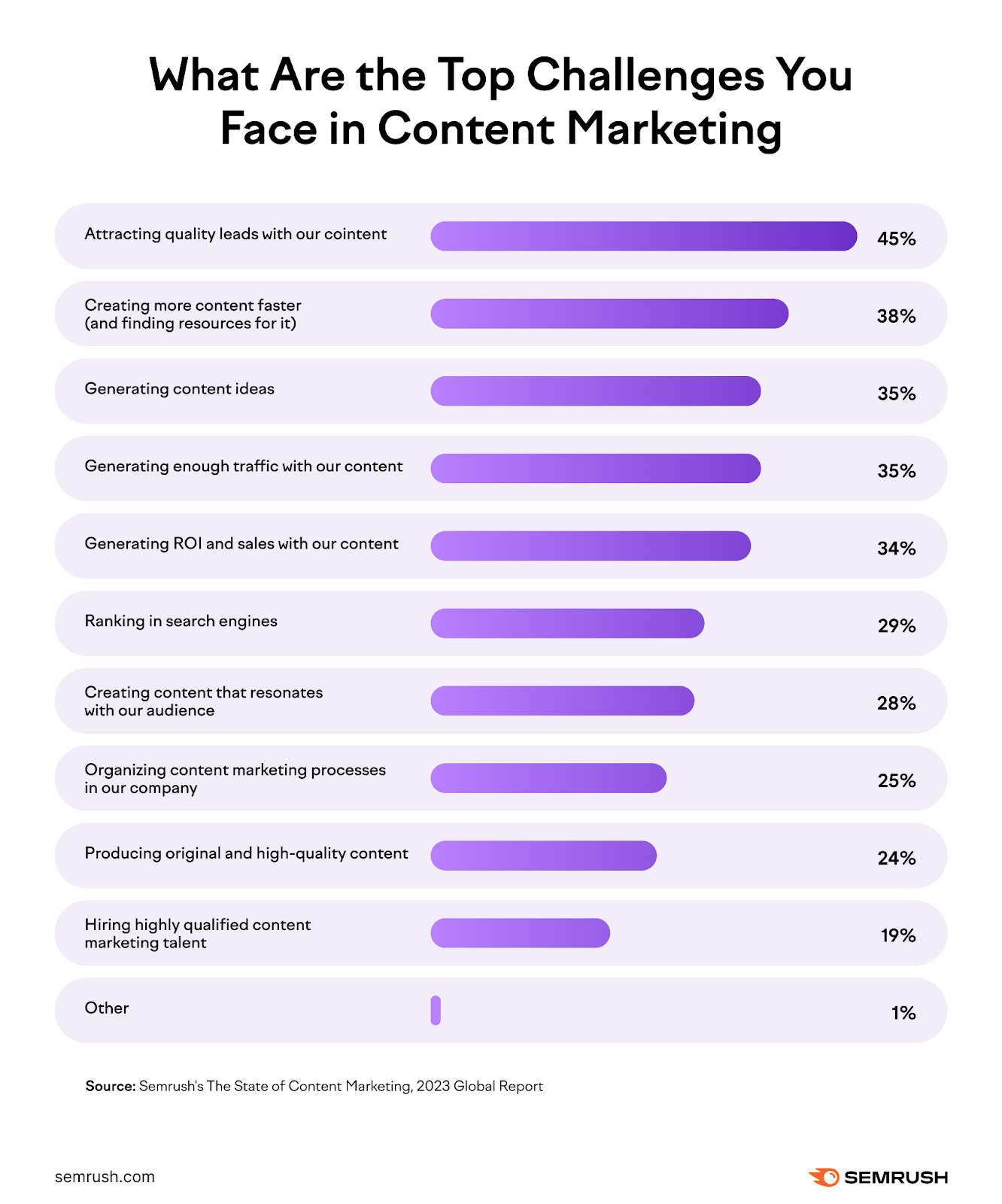
The failure to convert leads can happen for many reasons.
Your product trial might be underwhelming, your gated content could attract the wrong audience, or your pricing might be off.
Even when someone purchases from you, there’s no guarantee they won’t go elsewhere later on. Because customers have a lot of options and typically need a lot of convincing to remain loyal.
How to Solve This Problem
First, make sure you have enough information on who your ideal buyers are. And document it with Semrush’s free buyer persona templates.

Having detailed personas ensures everyone knows what your target audience cares about and what influences them. Which helps you understand which tactics and messages are most likely to resonate.
You can also focus on potential customers who are further into the buyer’s journey to better convert leads into customers. After all, research shows that roughly 10% of B2B prospects are ready to buy at any moment.
So, if you’re using SEO to drive sales, focus on bottom-of-the-funnel (BoFu) content like comparison guides and use cases. Because the leads you attract with this type of content are more likely to become customers given they’re nearly ready to buy.
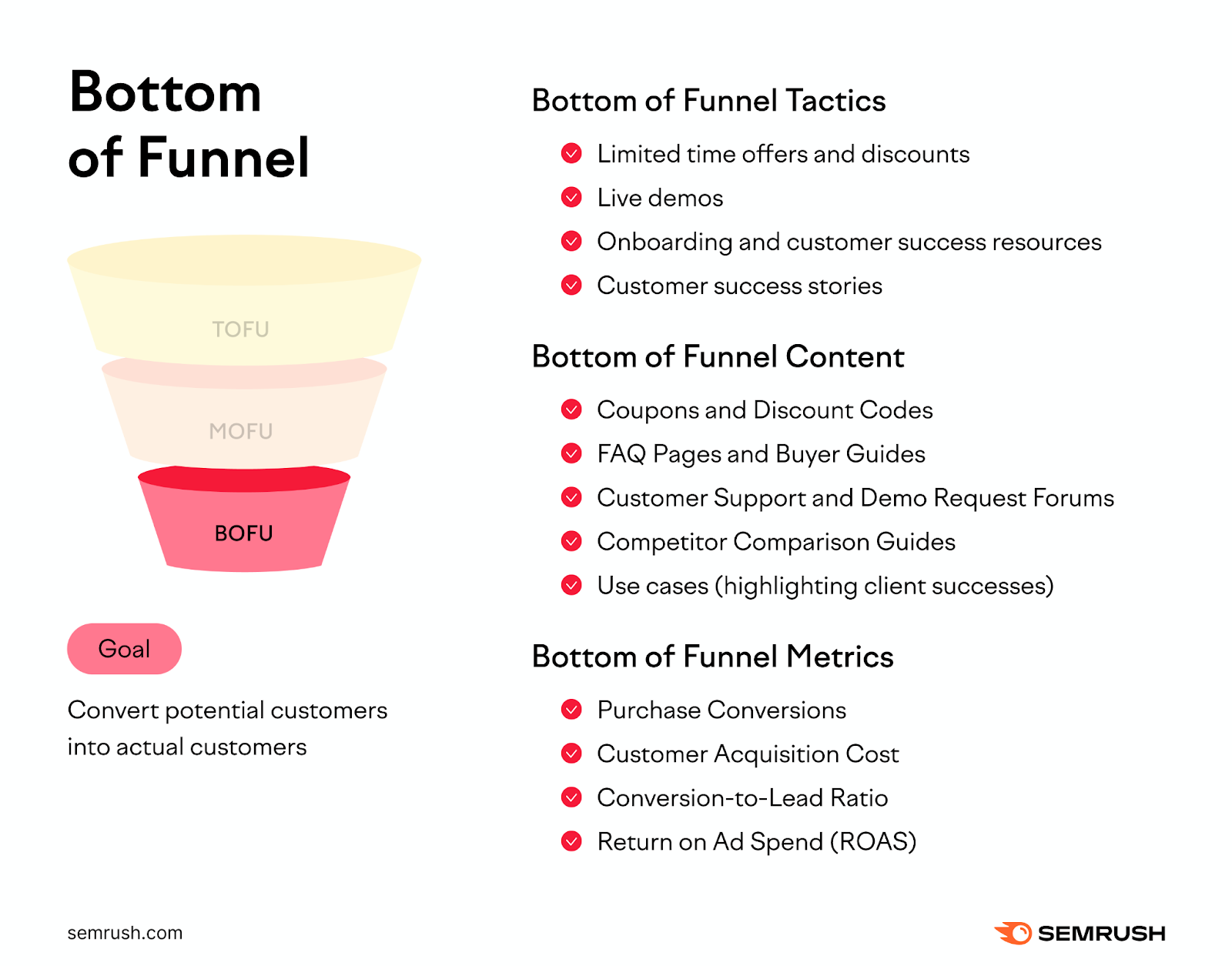
Another way to turn more leads into sales is to analyze your customer journey to find where leads drop off the sales funnel. And turn those drop-off points into opportunities.
Maybe you’re great at getting prospects to trial your product. But only a few end up purchasing it.
You could then decide to provide these prospects with persuasive content like case studies and reviews. Because this social proof may nudge people to buy.
5. Reduced Budgets
Marketing Week research reveals that 47.7% of marketing teams are dealing with tighter budgets. And that translates to reduced spending on martech tools and other resources—which may keep marketers from hitting their goals.
On top of that, profitability has become more important than ever.
Companies expect marketing teams to contribute accordingly. And measure their work against ever-more ambitious revenue goals.
This calls for increased resourcefulness and focus. But how exactly do you achieve more with less?
How to Solve This Problem
A key way to overcome budget constraints is to focus on the channels that offer the best return on investment (ROI). Which you can calculate for each channel with this formula:
Channel ROI = ((channel return – channel investment) / channel investment) x 100
Let’s assume you get $10,000 in revenue from a $2,500 investment in social content. Here’s what the ROI calculation would look like:

As you can see, it’s worth focusing on your social content.
Also, track other key business metrics such as conversion rate, customer acquisition cost (CAC), and customer lifetime value (CLV).
If CLV for a particular channel is significantly higher than CAC, you may want to allocate more budget to that channel. And cut ones that aren’t driving results
Lastly, consider using AI tools to reduce the cost of content creation (assuming it’s an area you’re going to focus on).
For instance, AI Social Content Generator lets you create social posts from your existing blog posts. And easily generates videos for Instagram, TikTok, and other platforms.
6. Rising Advertising Costs
Advertising costs across major ad platforms have increased over the past few years.
For instance, research from Revealbot shows the cost per thousand impressions (CPM) on Instagram rose from just over $6 in January 2020 to more than $10 in April 2024.
And Google has admittedly raised ad prices by up to 10% at times.
There’s every reason to believe the demand for ad space on Facebook, Google, and other advertising platforms will continue to grow and drive ad costs up.
How to Solve This Problem
Use conversion data to identify ad formats, channels, and targeting options that perform best. And double down on them.
Also, analyze your competitors’ data to find winning ad tactics.
Semrush’s Advertising Research lets you inspect other brands’ paid search ads.
Enter a competitor’s domain in the tool and hit the “Search” button.
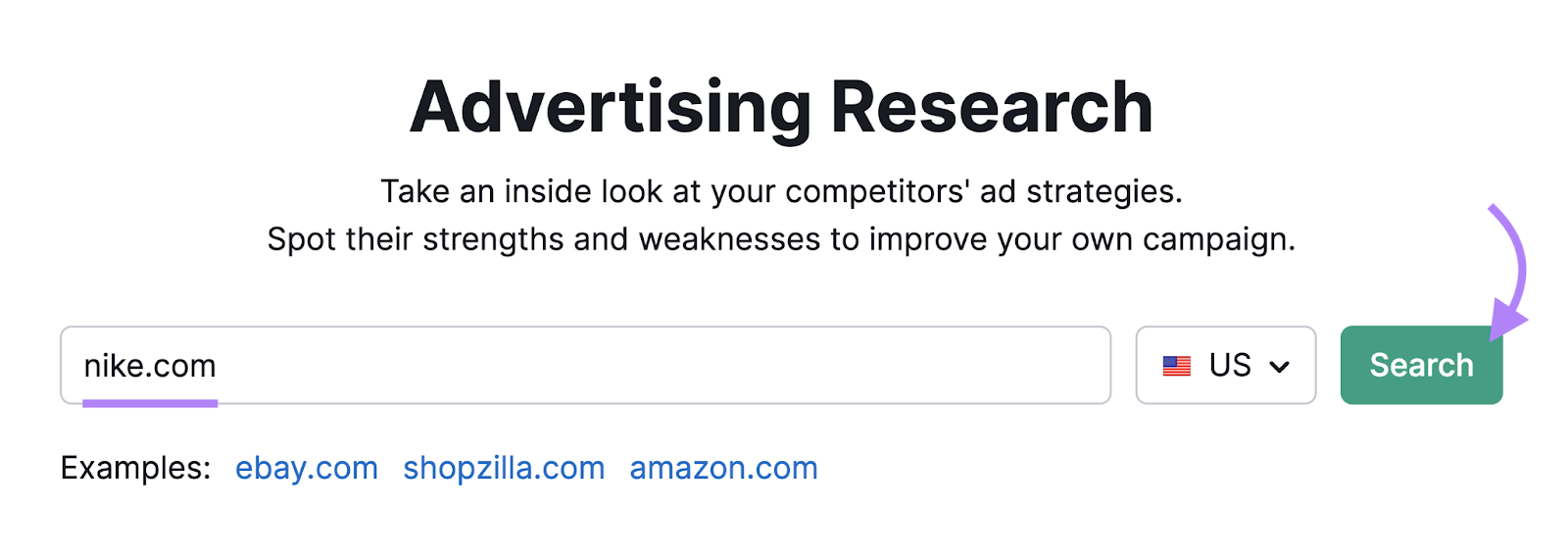
From the “Positions” tab, scroll down to the “Paid Search Positions” section to see a list of keywords your competitor is bidding on.
Interesting data points include:
- Volume: The average number of times people search for a specific keyword per month
- Cost per click (CPC): The average price advertisers pay for clicks on their ads
- Competitive density (Com.): A metric between 0 and 1 indicating competition levels (1 being the highest)
Use this information to determine which terms are a good fit for your own ads.
Then, click “Export” to download the list and find keywords of interest for your brand.
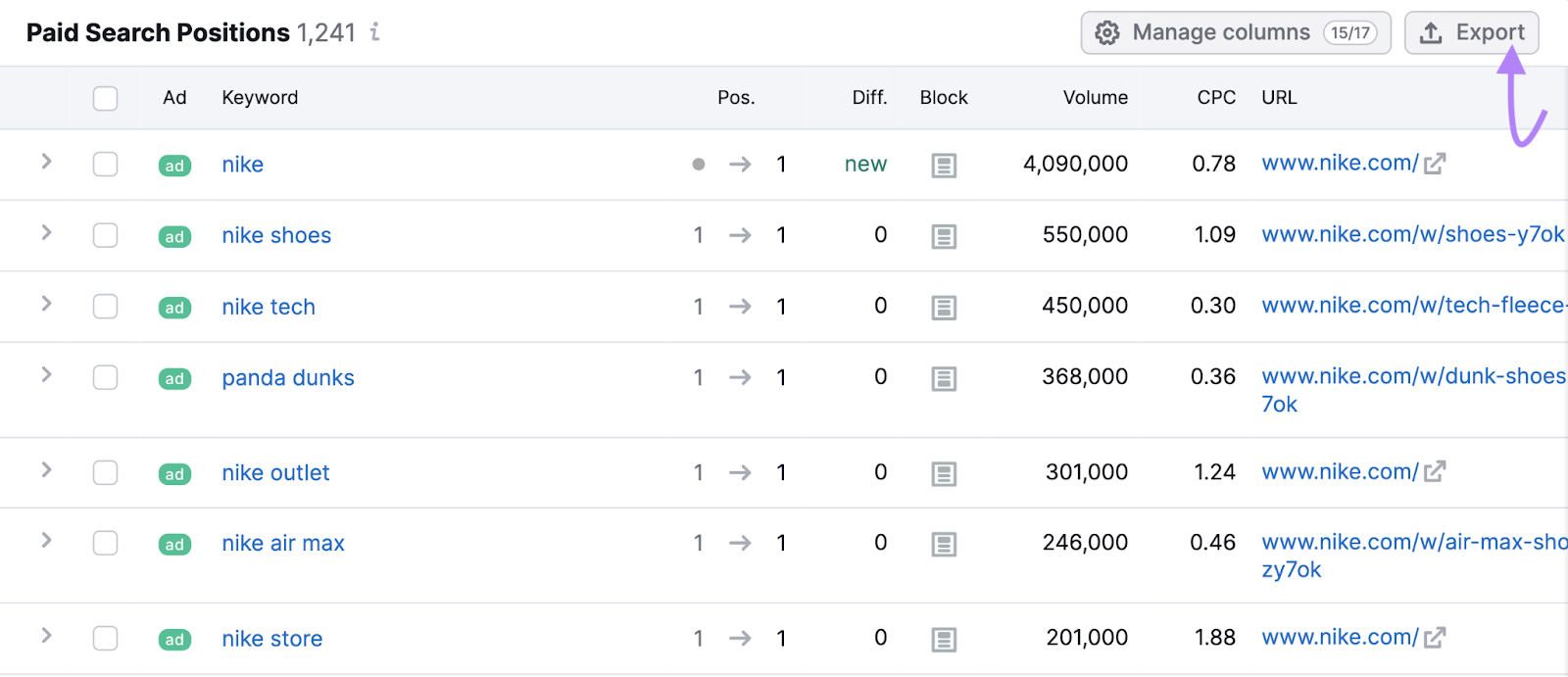
Next, go to the “Ads Copies” tab to see the copy your competitor uses and the keywords those ads target.
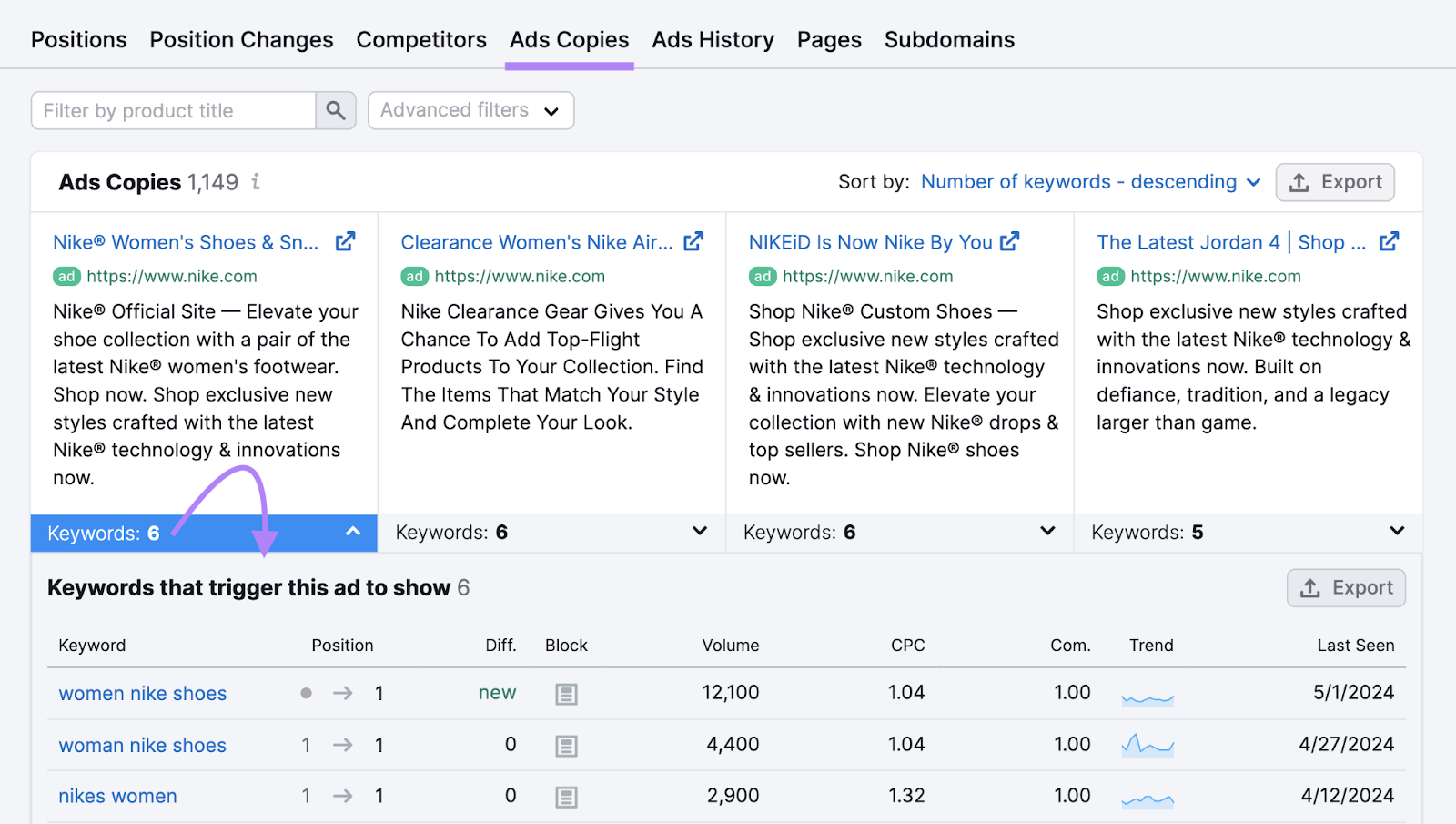
Analyze this ad copy and the corresponding landing pages. To understand what kind of messaging your competitor uses, which product or service features they highlight, and which calls to action (CTAs) they use.
Another way to overcome rising advertising costs is to ensure your ads are as relevant to your audience as possible. To increase the **** of them clicking and converting.
Google Ads makes it easy to assess your ads’ relevance through its Quality Score metric. Which is displayed in the platform.

The score is based on a number of factors, but relevance is a key part. Meaning a low score suggests your ad could better align with what users are looking for.
Aim for a Quality Score of 7 or above.
7. Stakeholder Buy-In for Long-Term Efforts
CEOs and other high-level stakeholders want marketing to drive revenue fast. But that’s challenging for a few reasons.
First, nearly two-thirds of marketing leaders (61.2%) struggle to explain how their work impacts financial outcomes.
Second, even when marketers are able to show value, long-term marketing practices like SEO and community building take time to show positive ROI. So, they risk underfunding despite the potential to drive growth.
How to Solve This Problem
One way to overcome leadership hesitancy is to show how investing in long-term efforts has benefitted your competitors. Because you can draw on data from companies that already did it.
Let’s say you want to demonstrate the value of SEO.
Run Semrush’s Domain Overview tool to gain insights into how long it took your competitor to build its SEO engine.
On the main “Overview” dashboard, you’ll get historical data on your competitor’s organic traffic and keyword performance. Showing you how its organic footprint grew over time.
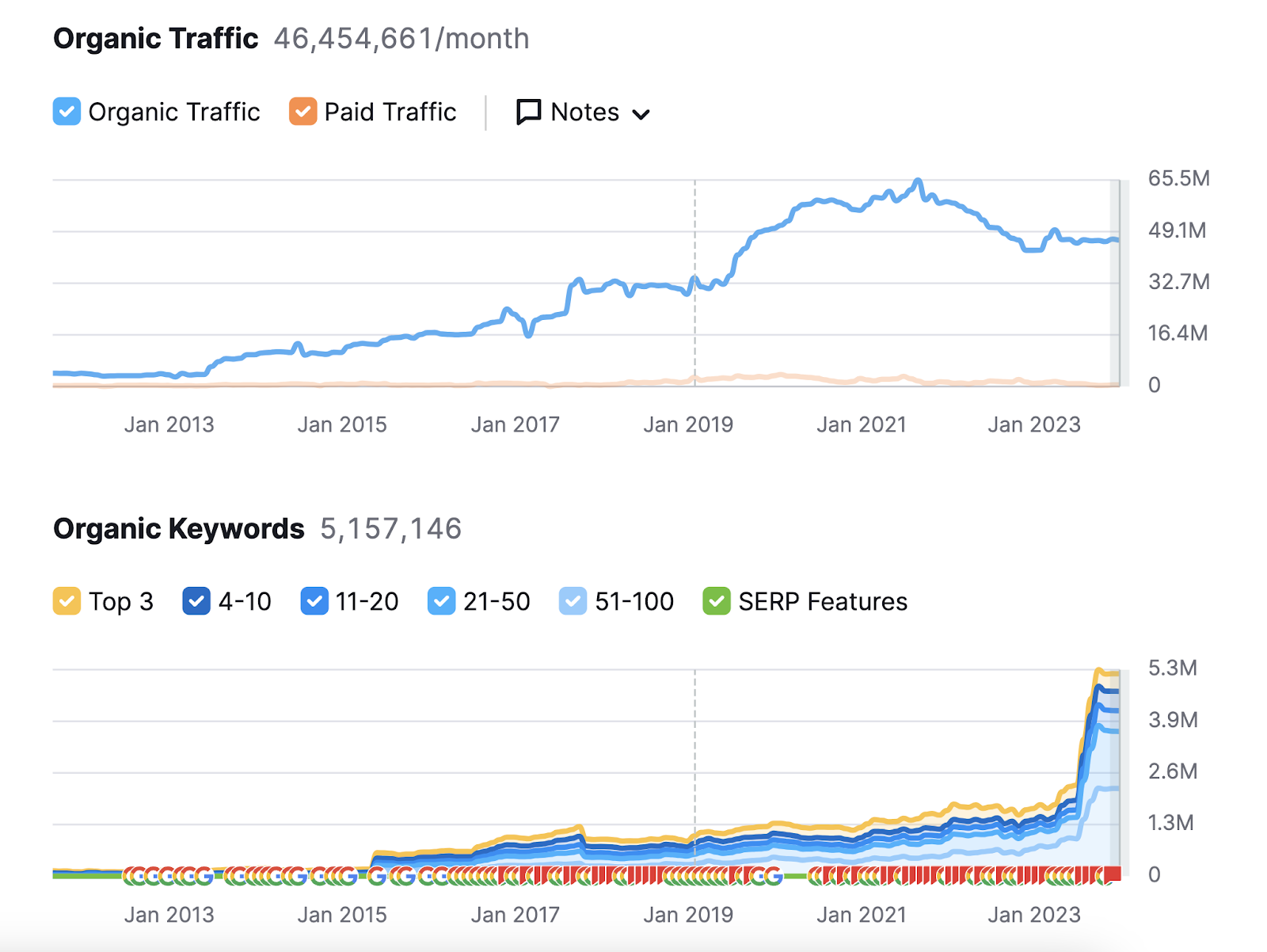
You can use this data when communicating with stakeholders. So they understand the potential for success with a long-term approach.
Another way to get stakeholder buy-in is by highlighting how many people use a particular long-term channel.
Let’s say you want to pitch building an SEO-optimized blog for a protein bar brand. And you want to show the scale of that search opportunity in the U.S.
Measure search interest with Keyword Overview.
Enter a keyword that’s relevant to your business, select your target country, and click “Search.”
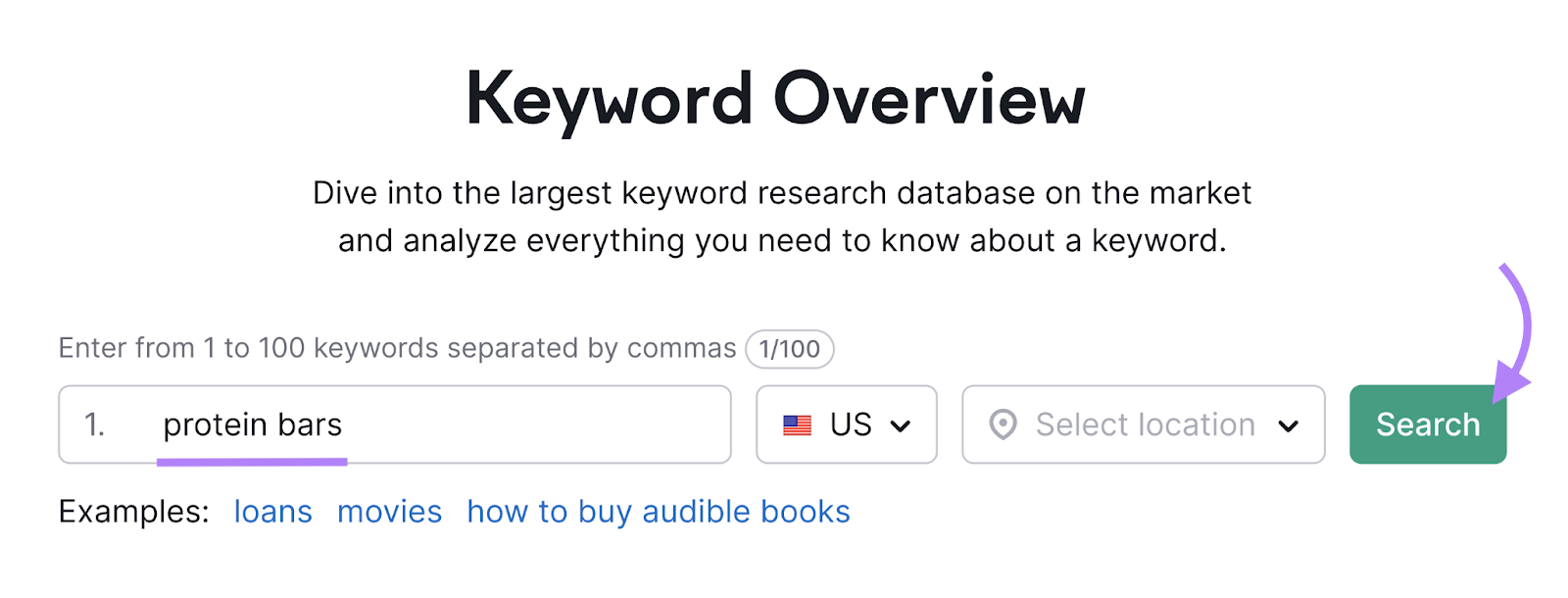
You’ll reach the main “Overview” dashboard.
Here, you can see that the average number of monthly searches for your keyword in your target country is 49.5K. And that the search volume is beginning to increase based on the “Trend” box.
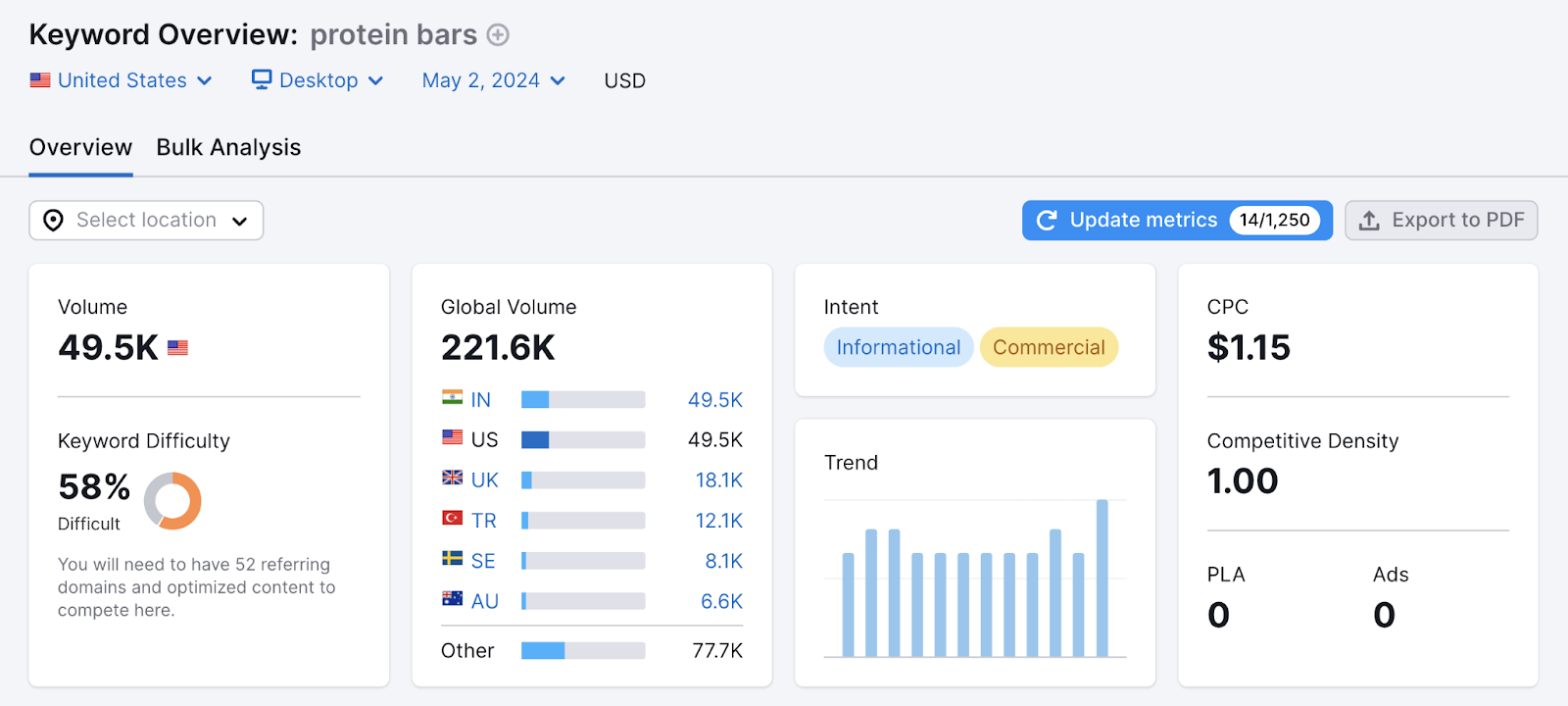
You now have data to support your idea for building a blog.
Other ways to pitch the value of long-term marketing channels include:
- Launching a pilot program and scaling it once it shows enough traction
- Stressing the risk of inaction if competitors have already invested in your chosen channel
- Forecasting how much revenue the channel could bring
Whichever method(s) you choose, always use data to back your claims. Because stakeholders will be more likely to approve your plans.
Get Data-Driven Solutions to Your Marketing Problems
Your brand is likely facing one or more of the marketing problems we’ve covered in this piece. So, choose the proposed solutions that make sense for your brand, team, and available resources.
And make sure you have the right tools to support your efforts.
Semrush offers an array of options to help you reach your goals.
Sign up for a free Semrush account to get started.
Source link : Semrush.com
